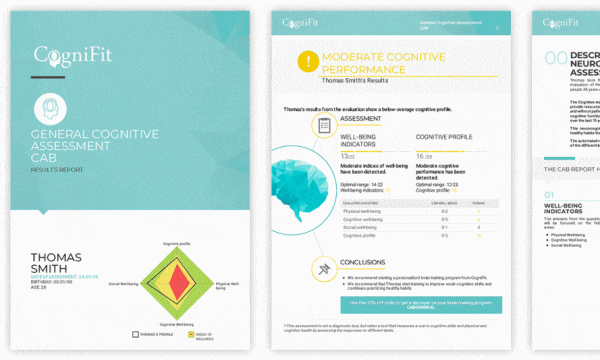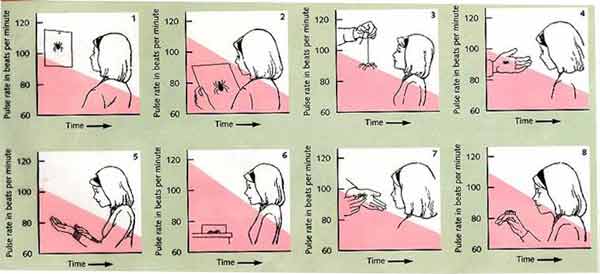
Associative Learning: Learning from association or relating several things
Associative Learning: How do punishments and rewards affect us? Have you ever wondered how we learn that something is dangerous or beneficial to us? What is associative learning? What is it for? What types are there? Discover here the answers to these questions and much more. In this article, we will explain in detail and give numerous examples to one of the most popular approaches to learning.

What is Associative Learning?
Regardless of the environment, the method we use or our motives, learning consists in relatively stable changes in our behavior or our mind produced by experience.
How does our brain learn? Answering this question is a great challenge for psychologists and professionals from other disciplines dedicated to education. Experts strive to develop learning theories. In this article, we will talk about one of the most successful proposals.
The definition of associative learning encloses several different types of cognitive processes and events. It is a learning that takes place when two elements are connected in our brain. For example, if we associate the alarm clock to get up early, we will find out what this instrument is for and how little we like it.

What is Associative Learning for?
Learning new content and constantly adapting to the circumstances is fundamental in all life stages. Progress in understanding this process favors the advancement of better educational methods and increase the common welfare. If we were not able to associate different ideas, we would be forced daily to ask how we get to our house or exposing us to dangers like fire after ignoring that it burns. We would have what is commonly called “three-second memory” or “fish memory”. Fortunately, we are able to connect the dots and associate different things for example, that water quenches thirst or that eating certain foods can give us allergies.
How does associative learning take place?
The processes related to associative learning takes place through experience. Our experiences teach us what benefits us and what is harmful to us. Although we don’t always get the same results with the same acts, past events are a fairly reliable guide for our future actions.

Animals have been the main protagonists in the experiments dedicated to deepening associative learning. Ivan Pavlov developed one of the most famous experiments in associative learning and psychology in general. In the 1980s this Russian physiologist observed how dogs salivated (unconditioned response) after seeing the food (unconditioned stimulus). He then decided to sound a neutral stimulus like a bell (conditioned stimulus) when presenting food to animals. The result was that the dogs began to salivate upon hearing this instrument (conditioned response). They had associated the sound of the bell with food.
The hippocampus role in associative learning
Strong learning-related patterns of neural activity are provided within cells in the hippocampus and they participate in the initial formation of new associative memories. There may be gradual recruitment of a network of hippocampal neurons during the formation of new associative memories. Other brain areas may be involved in associative learning including the prefrontal cortex (Asaad et al., 1998), frontal motor-related areas (Brasted and Wise, 2004; Chen and Wise, 1995a; Chen and Wise, 1995b; Mitz et al., 1991) and striatum (Brasted and Wise, 2004).
Associative learning: Types and examples
1. Classical conditioning
Classical conditioning is a type of associative learning based on the association between a neutral stimulus with another that is significant for a person or an animal in order to generate a similar response. It is the process we have seen previously with Pavlov’s dog.
A representative experiment in classical conditioning is that of Little Albert. It took place in 1920 and was carried out by Watson and Rayner. They felt that fear, anger, and love were the original patterns of emotional reactions in children and developed as they grew older.
Therefore, they decided to experiment with Albert, a small nine months remarkably undisturbed and in good health. Albert only reacted with fear to a thunderous sound caused by a steel bar being struck behind him.
Subsequently, they began to present white rats while causing noise. There was a firm association between these two stimuli that was generalized to others like soft cotton or a seal coat. Albert had developed a phobia of white or hairy objects or living things. Currently, it is absolutely forbidden to carry out research like this for obvious ethical reasons. The following video is the Little Albert experiment.
Imagine that you have dined your favorite dish. Then you lie quietly in bed. But for some reason totally foreign to your dinner, you vomit several times throughout the night. Most likely, your favorite food will start to look disgusting. This is an example of a process of classical conditioning. Has it ever happened to you?
Generalization and discrimination
Generalizing and discriminating helps us to adapt better to all kinds of contexts. For example, little Albert generalized his fear of several similar stimuli. Instead, a demonstration of discrimination occurs when we learn that we can only cross the street when the traffic light is green.
Extinction
It consists of not associating the conditioned response with the unconditioned stimulus. For example, imagine that we associate exaggerating our qualities so people praise us. However, if one day our friends stop praising us regardless of the exceptional anecdotes we report, then we will stop using this technique and our behavior will be extinguished.
2. Operant or instrumental conditioning
This type of associative learning has many similarities with the previous one, like the existence of similar procedures of generalization, discrimination, and extinction. However, in operant conditioning, the individual is less passive than in the classical conditioning and his responses are not automatic. It is that the consequences of a person’s behavior produce changes in their learning, favoring the repetition of their actions or ceasing to occur. Skinner was an influential behavioral psychologist who continued to work on the ideas of Pavlov and Watson. He created the famous Skinner boxes, which were used to experiment with rats. A small dose of food was offered to these animals each time they hit a bar. At first, the rats pressed the bar out of curiosity or casually. However, when they realized that whenever they acted like that they were rewarded, they began to perform this act voluntarily. If you want to know more you can watch the following video.
Reinforcement and punishment
Reinforcements or prizes increase the likelihood that we will act in a certain way. On the one hand, there are positive reinforcers, which are the rewards given for performing certain behaviors (increased rat behaviors in the previous experiment). Another example is to make a compliment to a person who has done us a favor.

Negative reinforcements, on the other hand, are based on not presenting an unpleasant event. An example is avoiding a subject of conversation with a friend that you know will feel bad if you bring it up.
A punishment is an annoying consequence due to our acts. Its purpose is to reduce the likelihood that we will behave this way again. If we fail for studying at the last minute an important subject and we have to retake the test, it is quite possible that we try to improve our study habits and try to overcome procrastination.
Associative learning: Characteristics
- Cognitive Processes are often overlooked: The main theorists of associative learning and their followers prefer to stick to observable events, such as behavior and the environment. Everything that is linked to cognitive processes remains relatively hidden and not analyzed by them.

- It was investigated and explained by behaviorists: Behaviourism is one of the main focuses of psychology. Behaviorists discarded introspection to study this process. They were particularly concerned about achieving quantifiable results.
- It is studied scientifically: The main theorists of associative learning worked laboratories under extremely rigorous conditions, relying especially on experiments with animals.
- It is one of the bases in education: Rewards and punishments are often used while teaching. However, teaching is not the only profession that uses associative learning.
Associative learning: Applications
1. Examples of associative learning in the classroom
Associative learning in children has been and continues to be studied in depth. Teachers often use positive reinforcements such as putting star stickers on children who have behaved extraordinarily well. On the other hand, not reinforcing children who shout deliberately for attention or punish those who annoy their peers.
2. Examples of associative learning in therapy
There are several therapies based on associative learning. For example, systematic desensitization is a technique based on the principles of classical conditioning. It was created by Wolpe in 1958 and is used in therapy to reduce anxiety symptoms and avoidance behaviors manifested by people with problems such as phobias.
If a person feels an intense fear of heights (acrophobia), the psychologist can apply this technique. You will choose an answer that is incompatible with anxiety, such as relaxation. He will then ask his patient to imagine situations in which he progressively approaches the object of his fear.
The affected person should imagine their approach as clearly as possible and assess their anxiety. Meanwhile, you have to try to relax to be able to gradually face your phobia. Ultimately, the end of this procedure is for the patient to stop associating negative feelings with the object of his fear.

3. Day-to-day examples of associative learning
If you are listening to a particular song while telling you bad news, it is very likely that when you hear it again you immediately remember that event and how you felt.
When teenagers need to clean their rooms, parents almost always offer a reward or reinforcement in exchange. This is a perfect example of associative learning.
Examples of associative learning can be found in virtually every area of our lives.
Associative learning bias
Associative learning can also be viewed from a more cognitive approach. For example, it is possible to analyze cognitive biases (which are deviations in the usual process of reasoning) from this perspective. They originate when we associate one idea with another without adequately taking into account all relevant information.
For example, if a redhead steps on us by mistake in the subway and since then we consider that all redheads are clumsy, we will be acting under the effect of a cognitive bias. On the other hand, if we learn to blame ourselves for any negative events that take place, it is possible to give rise to biases so negative that they become cognitive distortions.
Associative learning: Authors
– Ivan Pavlov (1849-1936)
This reputed physiologist won a Nobel Prize in 1904 for his studies on the digestive secretions of dogs. We have previously commented on his experiment with animals.
– Edward Thorndike (1874-1949)
He was a famous psychologist dedicated to research on education and learning from an instrumental conditioning approach. He designed problem boxes to examine how cats managed to get out of them by trial and error. He also enunciated the law of effect, which states that behaviors that report benefits are more likely to remain.
– John B. Watson (1874-1958)
Watson was a behavioral psychologist firmly convinced that anyone can be trained successfully to behave in a certain way. In fact, he was the author, along with his assistant, Rosalie Rayner, of Little Albert’s experiment.
– Edwing Guthrie (1886-1959)
This philosopher dedicated to psychology did not believe that the reinforcements were absolutely essential for the conditioning to take place. Inspired by Pavlov, he argued that the connection between a stimulus and a response was established from the first time they happened together.
– Burrhus F. Skinner (1904-1990)
He was an influential behaviorist psychologist who developed the ideas of his predecessors. He created the Skinner boxes used to investigate operant conditioning. He also insisted heavily on focusing on observable behavior to achieve a totally scientific and rigorous psychology.
– Joseph Wolpe (1915-1997)
He is the creator of systematic desensitization, which we have explained previously. He felt that you can’t feel two opposing emotions at once. Therefore, their goal was to relax people to lessen their anxiety reactions and that way fear is unleashed.
Finally, we want to add that there are other explanations that seek to clarify how we learn such as meaningful learning, social learning theory, cognitive learning, etc.
We invite you to look up these approaches as well since each one has a different way of looking at reality. However, many also complement each other. In fact, associative learning theorists now contemplate new, more inclusive perspectives.
Thank you very much for reading this article. Do not hesitate to comment if you have any questions or if you want to share some experiences with us. We will be happy to answer all your questions.
This article is originally in Spanish written by Ainhoa Arranz Aldana, translated by Alejandra Salazar.












